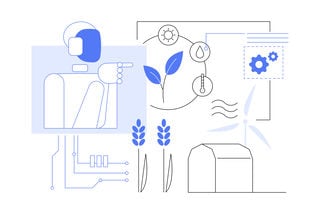AI in sustainable hospitality: Complementing human efforts for optimal results
AI and Sustainable Hospitality: Boon or Bane?
Sustainability in Hospitality — Viewpoint by Willy Legrand
While AI and technology are often heralded as transformative tools in the push for sustainability, especially in sectors like hospitality, it is crucial to recognise their limitations. AI can optimise energy usage, streamline operations, and provide valuable insights, but it does not physically insulate walls or address the skills gap necessary to design, develop, and construct hotels and buildings sustainably. Implementing sustainability measures, such as installing energy-efficient insulation and reducing embodied carbon, relies heavily on skilled labour and new construction practices. These physical and human elements are indispensable and cannot be replaced by AI.
Moreover, AI does not tackle value drains such as split-incentives, where the benefits of investments in sustainability (like lower energy bills) do not accrue to the party making the investment (often the landlord versus the tenant). These economic barriers often hinder the full realisation of sustainability goals. The performance gap—the discrepancy between ambitious sustainability targets and actual outcomes—is influenced by budget limitations, technical challenges, and stakeholder misalignment.
Human-centric strategies
Bridging this performance gap requires more than advanced technology. Enhancing workforce skills, effective project management, and aligning stakeholder incentives are critical human-centric strategies that complement AI. For instance, training programs and educational initiatives are essential to equip the current and future workforce with the necessary skills to implement sustainable practices effectively. This includes training in the latest sustainable construction techniques and materials, which are crucial for reducing embodied carbon and improving energy efficiency in buildings.
Moreover, effective project management ensures that sustainability goals are met within budget and on time. This involves coordinating various stakeholders, including developers, operators, and policymakers, to align interests and create a more holistic approach to sustainability. An example of a company excelling in this integrated approach is SustainCRE.
Case study: SustainCRE
SustainCRE combines advanced technology, holistic services, and funding assistance to set itself apart from traditional energy audit companies and solution providers. This integrated approach simplifies the retrofit process for customers, providing a one-stop solution. The use of predictive machine learning modelling and proprietary software to deliver accurate and efficient retrofit solutions is a significant differentiator. This technological edge allows SustainCRE to offer tailored solutions that are both cost-effective and time-efficient.
By guaranteeing Energy Performance Certificate (EPC) upgrades and assisting with funding, SustainCRE reduces the financial risk for customers, making the decision to retrofit more attractive and less daunting. This model not only showcases the practical application of AI in sustainability but also highlights the essential role of human expertise and strategic oversight in achieving these goals.
AI applications in hospitality
AI can enhance sustainability in the hospitality industry by optimising HVAC systems, predicting and managing food waste, and automating resource controls. Additionally, AI can personalise guest experiences, encouraging sustainable choices for eco-friendly amenities and services. For example, AI-driven systems can adjust lighting and temperature settings based on occupancy patterns, significantly reducing energy consumption.
In the realm of waste management, AI can analyse food waste patterns and help kitchen staff adjust purchasing and preparation processes to minimise waste. These AI applications, combined with human oversight and operational adjustments, lead to more sustainable practices.
Decarbonising buildings
AI's role in decarbonising buildings and aligning with net-zero targets is crucial. AI can significantly impact whole-life carbon, including embodied and operational carbon. By optimising design, construction processes, and material selection, AI can help reduce the carbon footprint of new buildings. AI-driven simulations and predictive analytics can assess the environmental impact of different construction materials and techniques, promoting low-carbon alternatives.
Low-carbon buildings, aligned with net-zero targets, are increasingly in demand as they mitigate transition risks associated with regulatory changes and market expectations. Such buildings not only reduce environmental impact but also enhance asset value and revenue generation. Investors and tenants are willing to pay a premium for energy-efficient buildings, contributing to higher valuations and better long-term financial performance.
In summary
AI is a powerful tool that can significantly enhance sustainability efforts, but it is not a magic bullet. The true value of AI in sustainability lies in its integration with human expertise, strategic oversight, and a systemic approach that combines technology with physical and human-centric strategies. Companies like SustainCRE exemplify how this integration can simplify processes, reduce financial risks, and drive effective sustainability initiatives. Only through this holistic approach can the hospitality industry achieve its ambitious sustainability goals and realise the full potential of AI.

 by
by 

